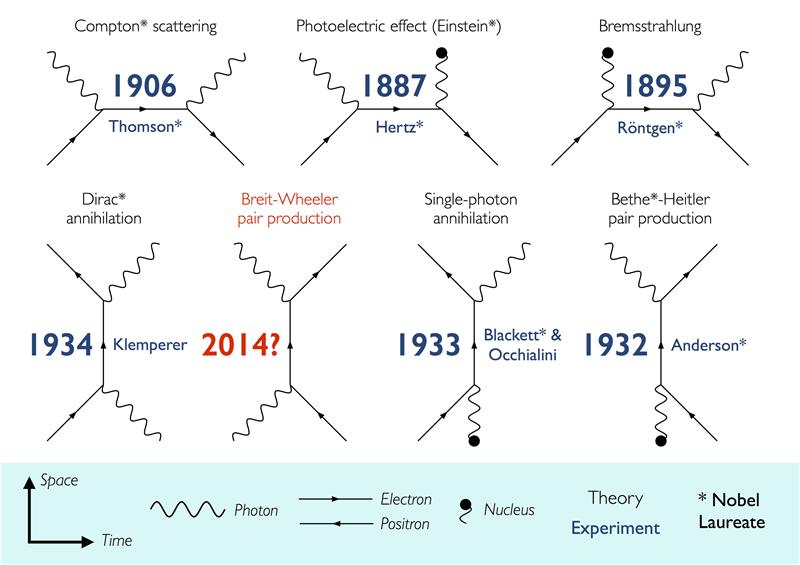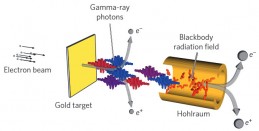Scientists discover how to turn light into matter after 80-year quest
May 20, 2014

Theories describing light and matter interactions (credit: Oliver Pike, Imperial College London)
Imperial College London physicists have discovered how to create matter from light — a feat thought impossible when the idea was first theorized by scientists G. Breit and J. Wheeler in 1934.
Breit and Wheeler suggested that it should be possible to turn light into matter by smashing together only two particles of light (photons), to create an electron and a positron — the simplest method of turning light into matter ever predicted.
The new research, published in Nature Photonics, shows for the first time how Breit and Wheeler’s theory could be proven in practice.
This “photon-photon collider,” which would convert light directly into matter using technology that is already available, would be a new type of high-energy physics experiment. This experiment would recreate a process that was important in the first 100 seconds of the universe and that is also seen in gamma ray bursts, which are the biggest explosions in the universe and one of physics’ greatest unsolved mysteries.
Demonstrating the Breit-Wheeler theory would provide the final jigsaw piece of a physics puzzle that describes the simplest ways in which light and matter interact. The six other pieces in that puzzle, including Dirac’s 1930 theory on the annihilation of electrons and positrons and Einstein’s 1905 theory on the photoelectric effect, are all associated with Nobel Prize-winning research.
How it would work

No comments:
Post a Comment